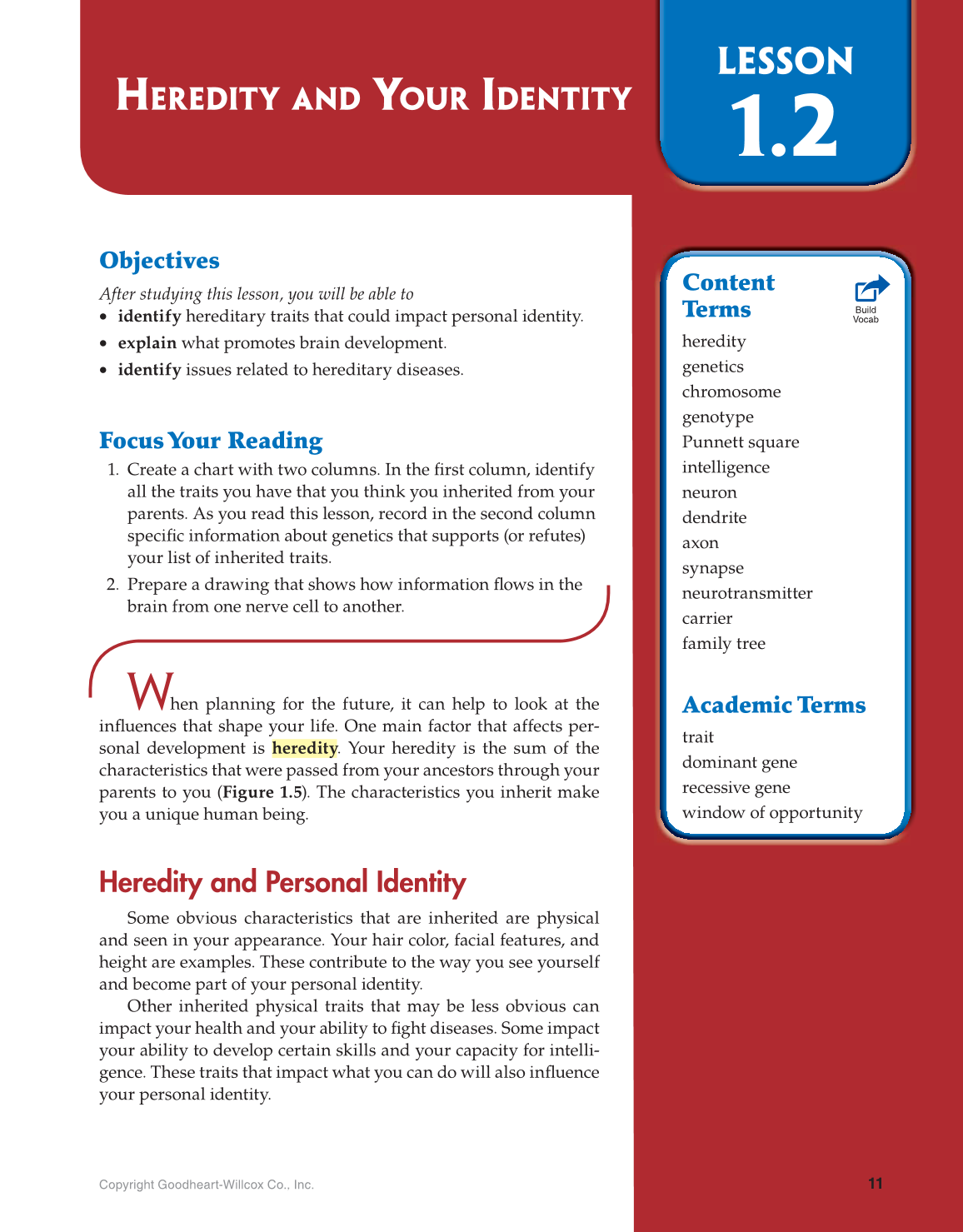11
Objectives
After studying this lesson, you will be able to
• identify hereditary traits that could impact personal identity.
• explain what promotes brain development.
• identify issues related to hereditary diseases.
Focus Your Reading
1. Create a chart with two columns. In the fi rst column, identify
all the traits you have that you think you inherited from your
parents. As you read this lesson, record in the second column
specifi c information about genetics that supports (or refutes)
your list of inherited traits.
2. Prepare a drawing that shows how information fl ows in the
brain from one nerve cell to another.
W
hen planning for the future, it can help to look at the
infl uences that shape your life. One main factor that affects per-
sonal development is heredity. Your heredity is the sum of the
characteristics that were passed from your ancestors through your
parents to you (Figure 1.5). The characteristics you inherit make
you a unique human being.
Heredity and Personal Identity
Some obvious characteristics that are inherited are physical
and seen in your appearance. Your hair color, facial features, and
height are examples. These contribute to the way you see yourself
and become part of your personal identity.
Other inherited physical traits that may be less obvious can
impact your health and your ability to fi ght diseases. Some impact
your ability to develop certain skills and your capacity for intelli-
gence. These traits that impact what you can do will also infl uence
your personal identity.
HEREDITY
AND
Y
OUR
IDENTITY
LESSON
1.2
Content
Terms
heredity
genetics
chromosome
genotype
Punnett square
intelligence
neuron
dendrite
axon
synapse
neurotransmitter
carrier
family tree
Academic Terms
trait
dominant gene
recessive gene
window of opportunity
Build
Vocab
Copyright Goodheart-Willcox Co., Inc.
